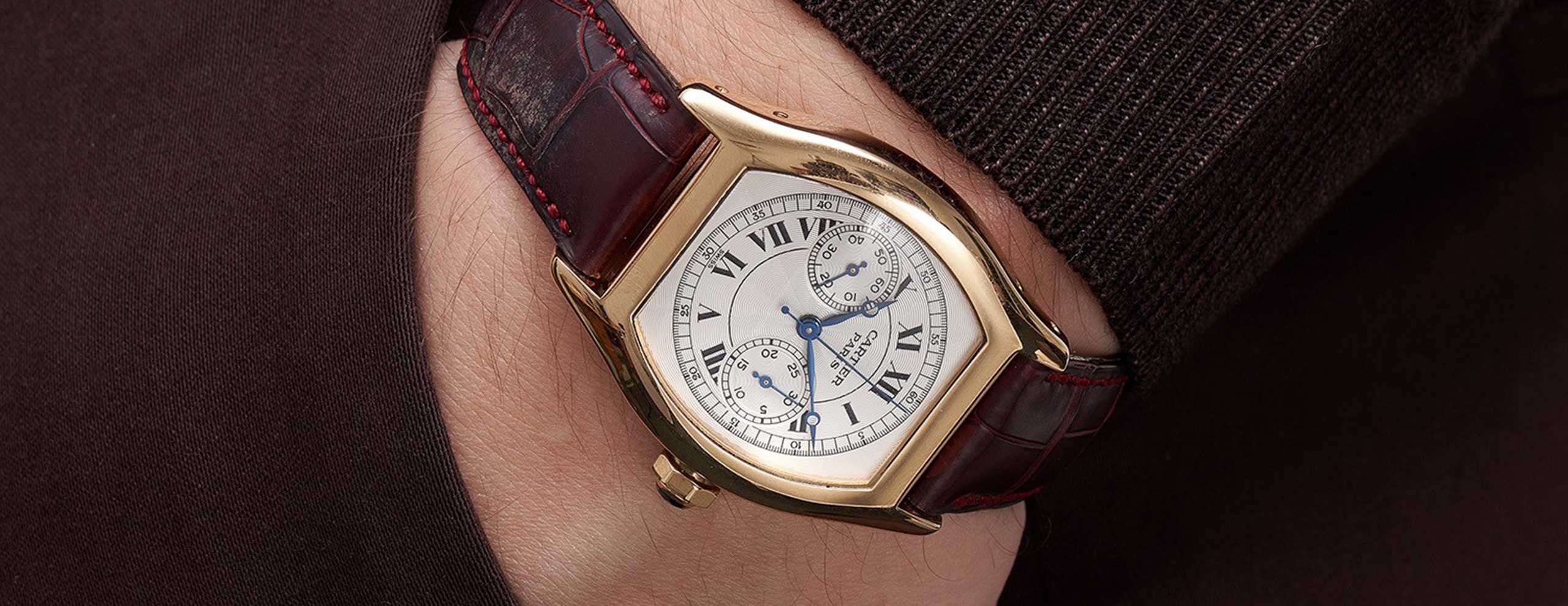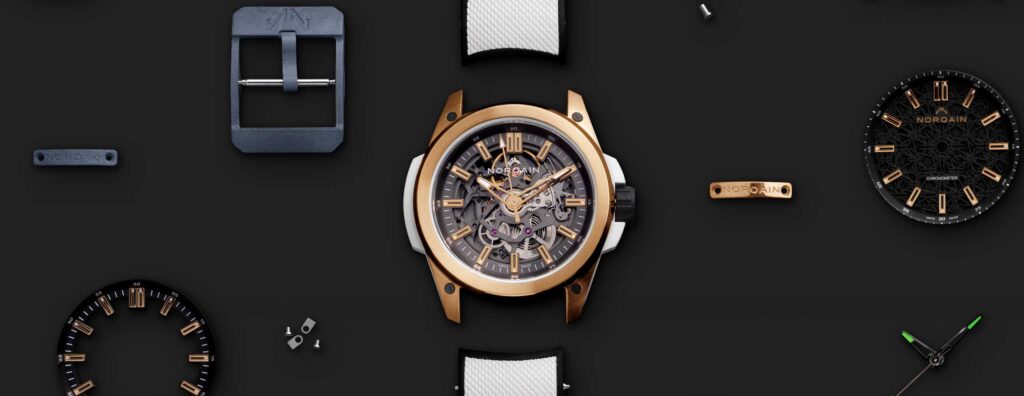A look at one of the earliest wristwatch designs in Cartier’s history.
Given the buoyant state of Cartier collecting today, comparable to the fervour for Rolex, thanks to the brand’s longevity and productivity, it is worth revisiting one of its least obvious yet historically important shaped designs – the Tortue. Made to resemble the shape of a tortoise hence its French moniker, the Tortue was only Cartier’s third watch case design, predating even the Tank. Louis Cartier had just introduced the Santos-Dumont in 1904 and the Tonneau in 1906 when he designed the Tortue in 1912.
While the majority of Cartier’s shaped watches introduced during first half of the 20th century were time-only, the Tortue, being a less radical and more substantial take on the tonneau shape, lent itself more naturally to complications. It stood as a rare example where Cartier’s inventiveness in design was complemented by sophisticated mechanics. The Tortue started out as a time-only watch but in 1928, both a minute repeater and a single-button chronograph were introduced.
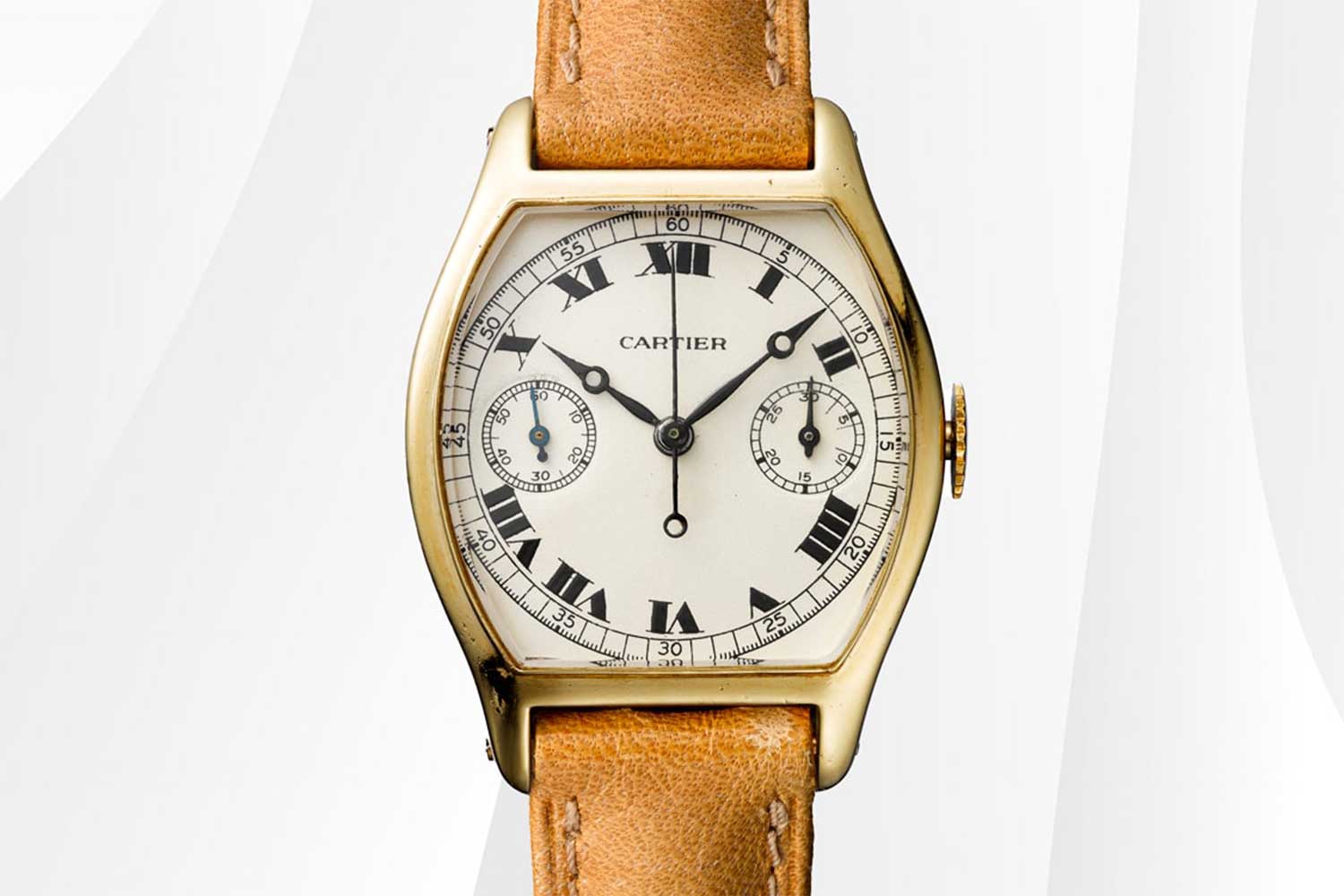
Cartier Tortue Monopoussoir during 1920s
These calibers were produced by the European Watch & Clock Company, a joint venture between Cartier and Edmond Jaeger of Jaeger-LeCoultre that developed movements exclusively for Cartier.
The Tortue Monopoussoir was Cartier’s first chronograph. It was a diminutive watch, measuring 25mm by 35mm and housed a traditional column wheel chronograph movement with a horizontal clutch. As its name suggests, its start, stop, and reset-to-zero functions are all handled through a single pusher, which was integrated into the crown. It had a very slim bezel and a matte dial marked by blocky Roman numerals, a chemin de fer minute track and flame-blued Breguet hands. The watch was produced in very small numbers and it is exceedingly rare for an original Tortue monopusher to surface at auction. It is estimated that only 11 examples have emerged to date. The most recent instances in 2017 and in 2021 saw it sell for CHF 62,500 at
Christie’s and CHF 189,000 at
Phillips respectively.
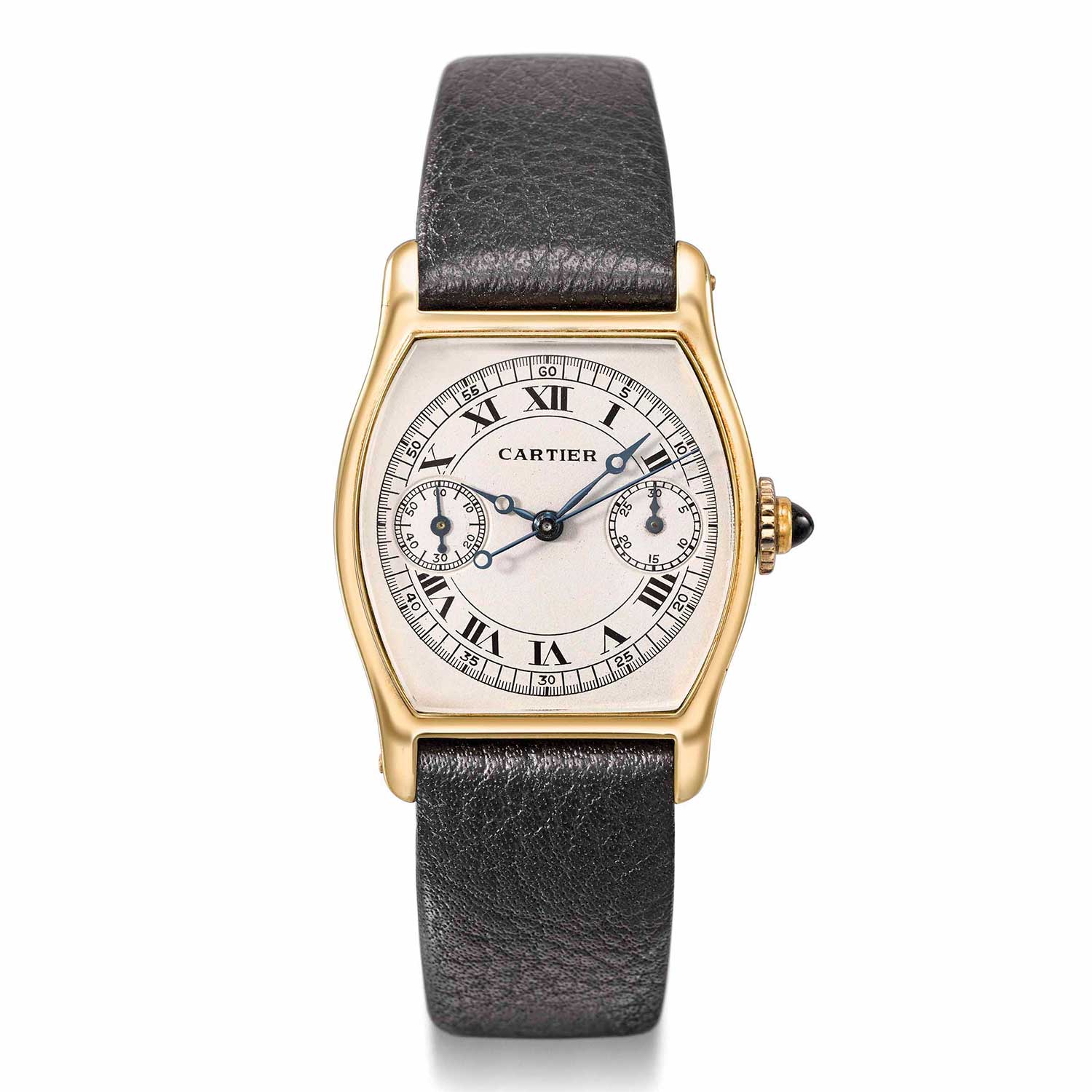
Cartier Tortue single button chronograph, circa 1929 (Image: Christie's)
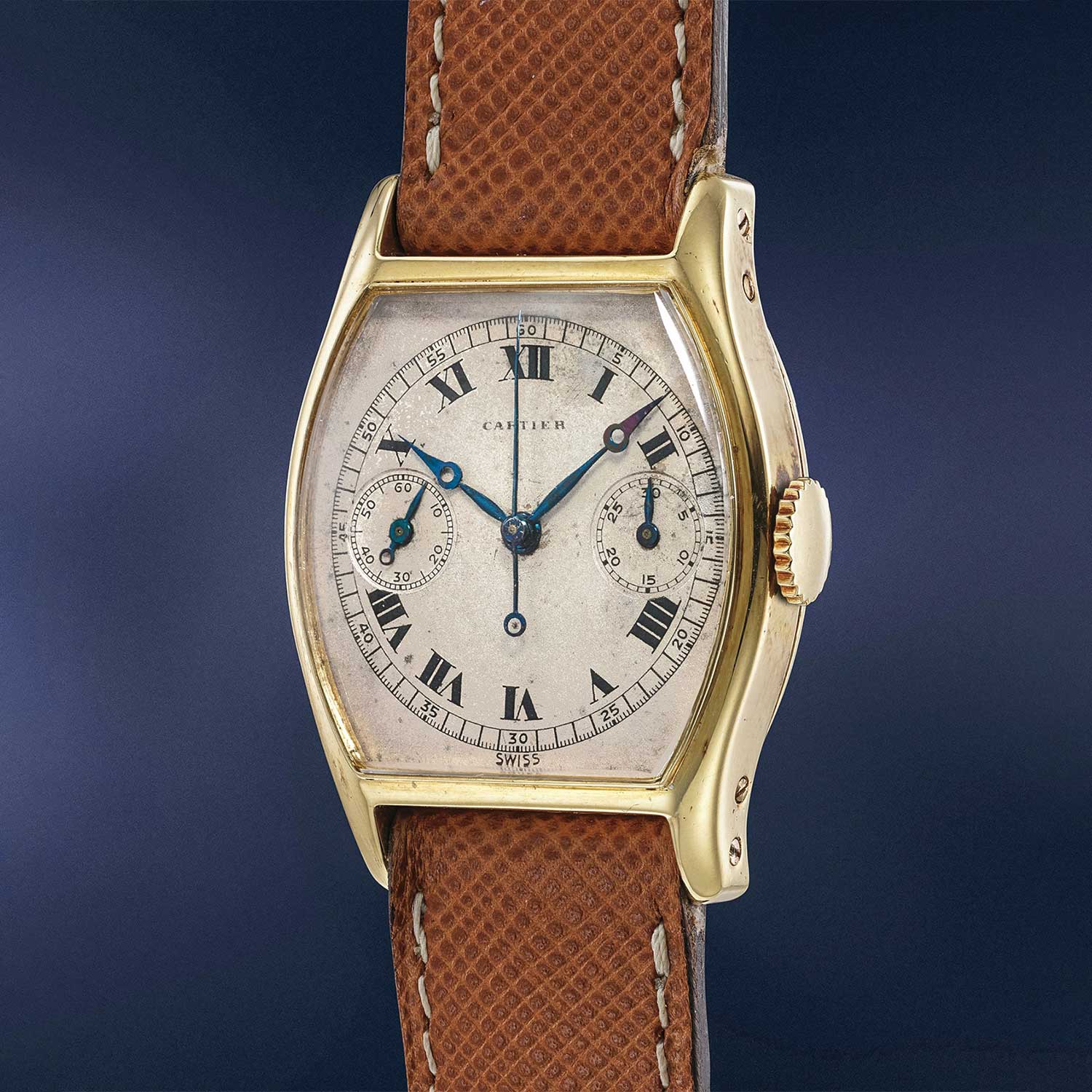
Yellow gold Tortue single-button chronograph, circa 1930 (Image: Phillips Watches)
In the latter half of the 20th century, Cartier underwent major changes internally. Following the passing of Pierre Cartier in 1964, the remaining family members overseeing branches in London, New York, and Paris opted to sell the family business. Cartier embarked on a period of expansion, significantly increasing its production from approximately 3,000 watches a year to over 160,000 by the end of the 1970s. During this time, it became a quartz powerhouse, prioritizing the production of battery-powered watches, notably within the Must de Cartier collection.
The advent of the Collection Privée Cartier Paris, abbreviated as CPCP, was an initiative to restore its position in watchmaking after yielding ground in the wake of the Quartz crisis. Spanning from 1998 to 2008, this period saw Cartier revive some of its most important designs, undergirded by a renewed emphasis on mechanics. Cartier collaborated closely with movement makers both within and outside the Richemont Group such as Piaget, Jaeger-LeCoultre, Frédéric Piguet and Girard Perregaux. Additionally, the brand entrusted the development of complications to two specialists that stood at the pinnacle of watchmaking at the time: Renaud & Papi and Techniques Horlogères Appliquées (THA).
Renaud & Papi was responsible for developing some of the most ambitious watches in the Collection Privée such as the Tortue Tourbillon Chronograph Monopoussoir as well as the Tortue Minute Repeater. The Tortue Monopoussoir was introduced in 1999 in all three colours of gold and in various dial executions. Most notably, woven into the story of its movement, the calibre 045MC, was three of independent watchmaking’s most esteemed names today – Denis Flageollet, Vianney Halter and François-Paul Journe. The trio had founded THA in 1989 with the aim of developing sophisticated technical solutions for the industry.
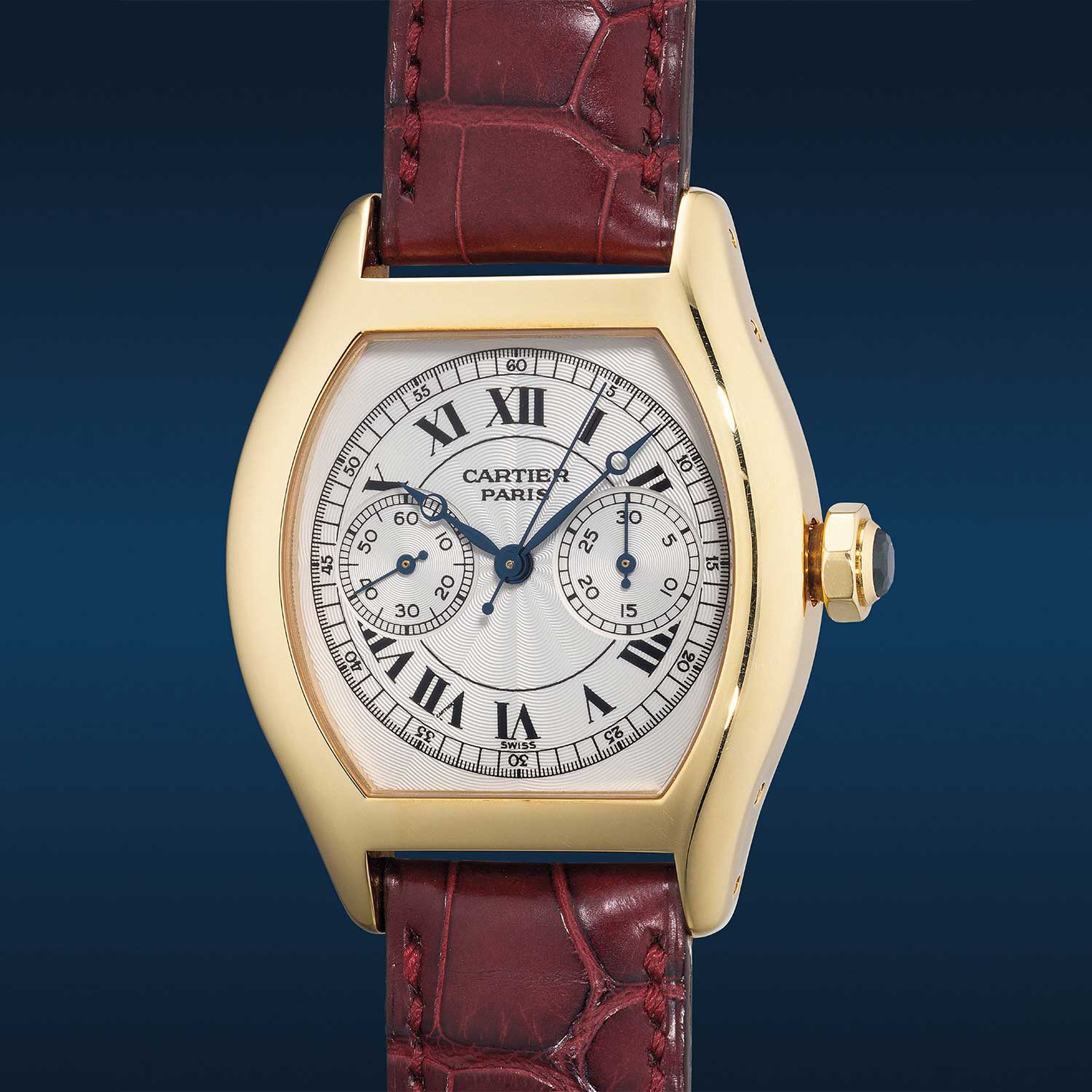
Yellow gold Tortue single-button chronograph wristwatch Ref. Ref. 2356 (Image: Phillips Watches)
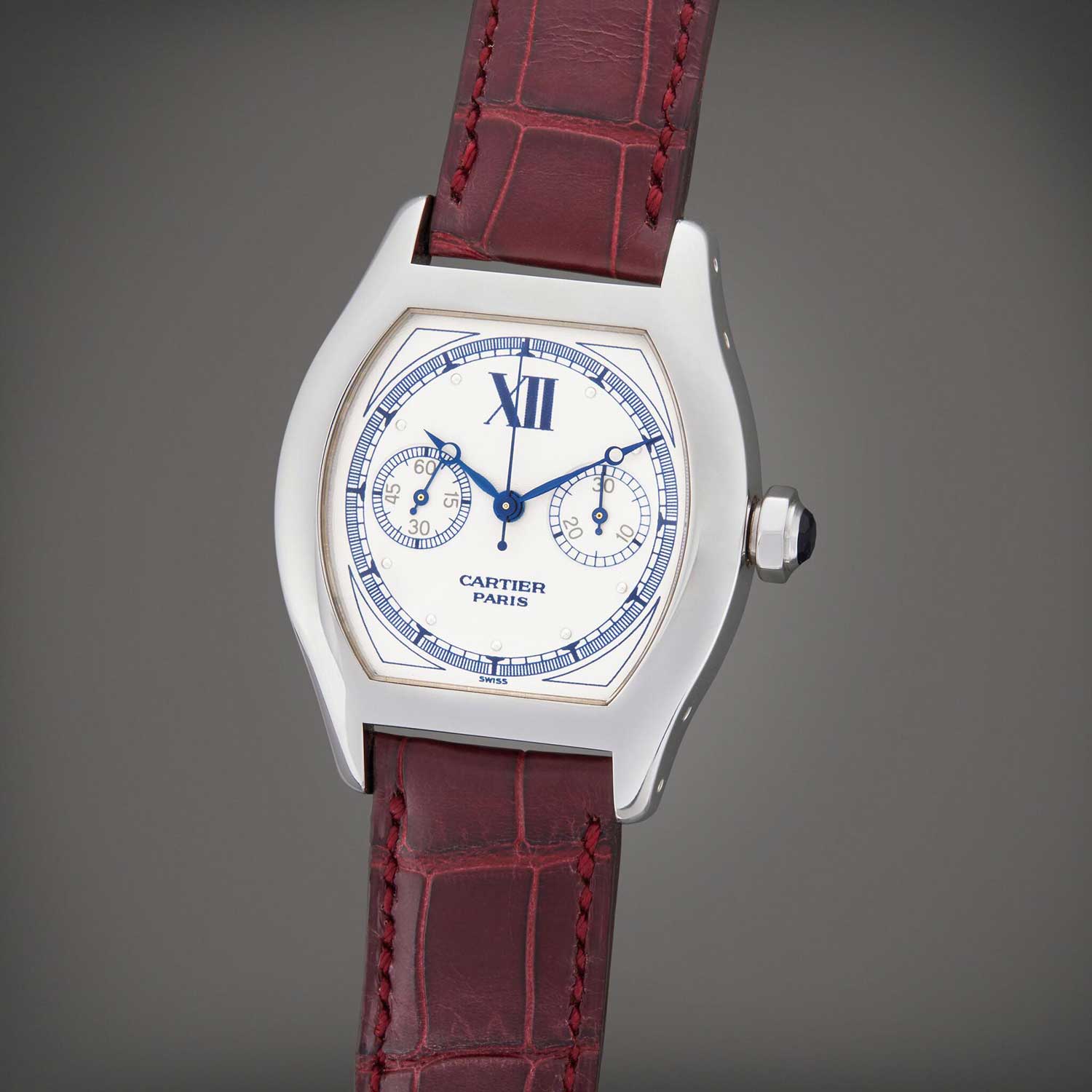
Cartier Ref. 2396, white gold tonneau shaped single-button chronograph (Image: Sotheby's)
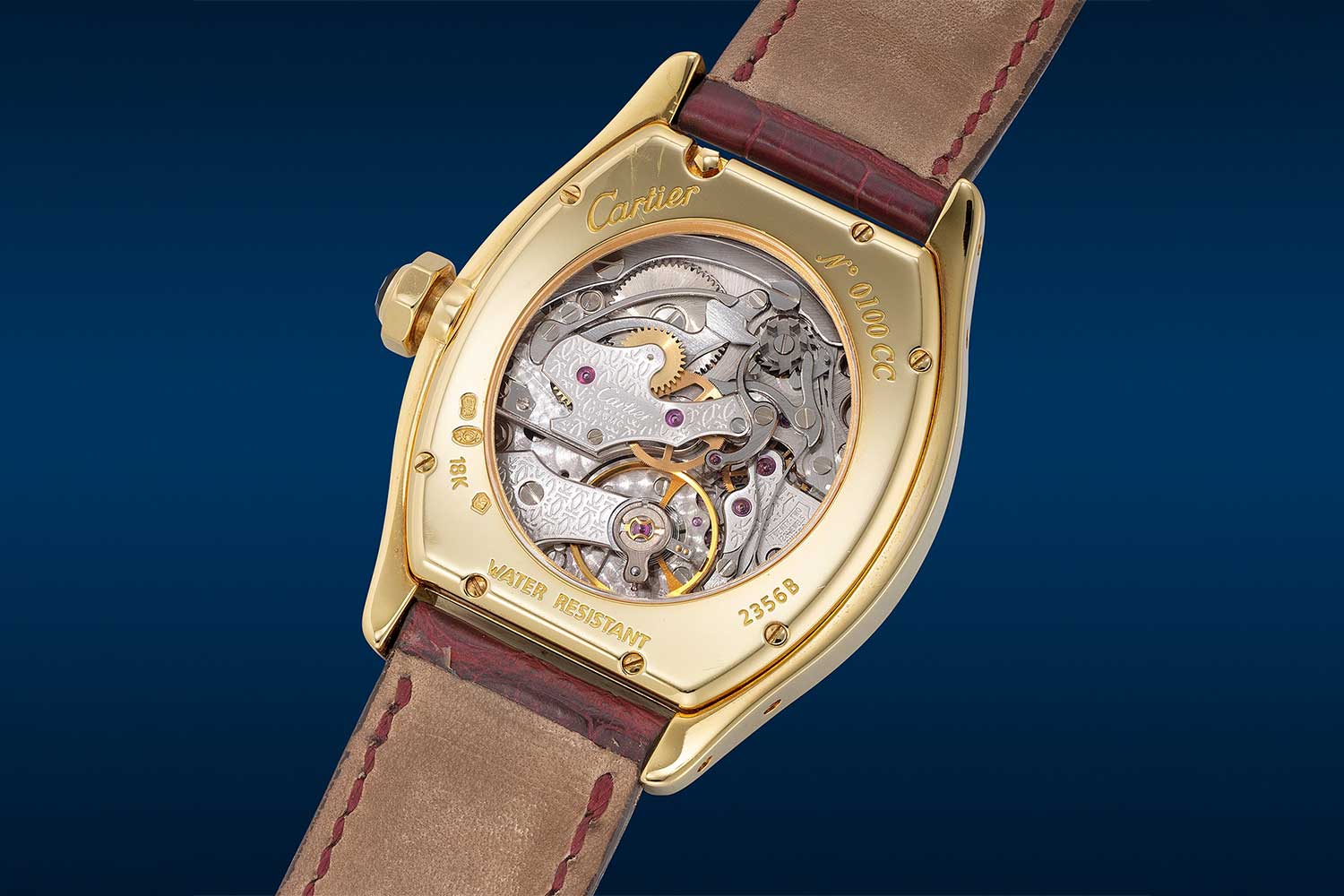
Case back of Cartier Ref. 2356 (Image: Phillips Watches)
In an interview with Phillips, Flageollet reflected, “”We were young, we had no doubts and we created incredible objects together that would be difficult to make today.” Having previously worked with Cartier on mystery clocks and watches, the watchmakers proposed to Cartier the idea of reviving the Tortue Monopoussoir. According to Flageollet, the product heads at Cartier during that period did not have extensive knowledge of their heritage, but it was clear to the watchmakers that the Tortue Monopoussoir had great historical significance.
The THA calibre 045MC was unusual in that it ultilised an oscillating pinion for coupling the main gear train to that of the chronograph. Made up of an arbor with a pinion on each end, this method of engagement remains the most practical way to connect the going train, which lies on the main plate of the movement, to the chronograph mechanism on top.
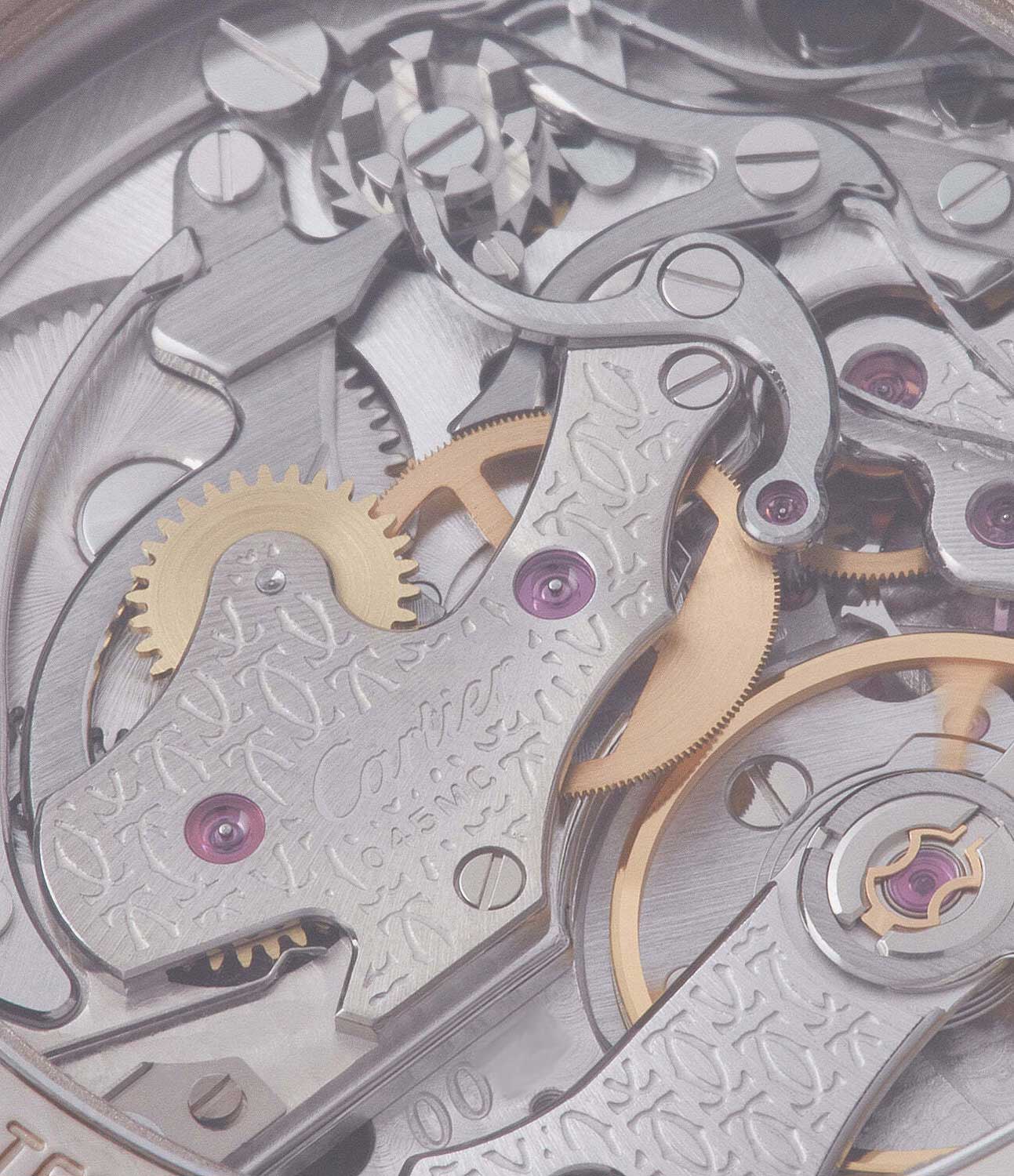
A closer look at the oscillating pinion coupling system (Image: A Collected Man)
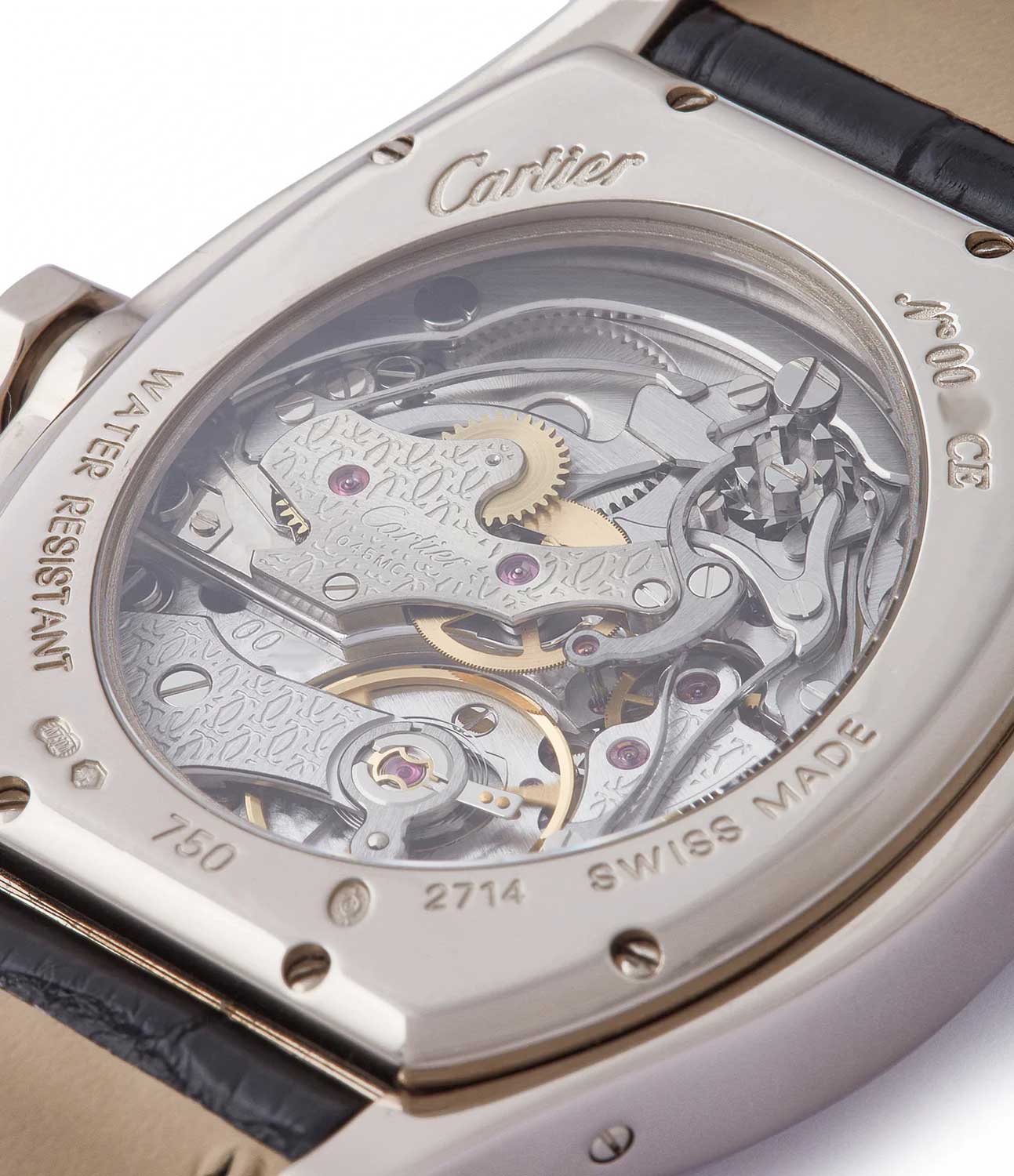
The caliber 045MC by Techniques Horlogères Appliquées (THA) (Image: A Collected Man)
The running small seconds hand is directly driven by the fourth wheel, which is constantly in contact with the lower pinion. When the chronograph is activated, the column wheel, which has six pillars and three times the number of ratchet teeth as it is a monopusher, rotates. This movement causes the lever carrying the upper pinion to pivot slightly, allowing the pinion to engage with the central chronograph seconds wheel. Being small with fine teeth, the oscillating pinion eliminates the pronounced jump of the seconds hand when the chronograph is actuated. At the same time, it eliminates the need for a traditional drive and clutch wheel used in a classic horizontal coupling system, thereby reducing the load on the going train and minimizing amplitude loss when the chronograph is engaged.
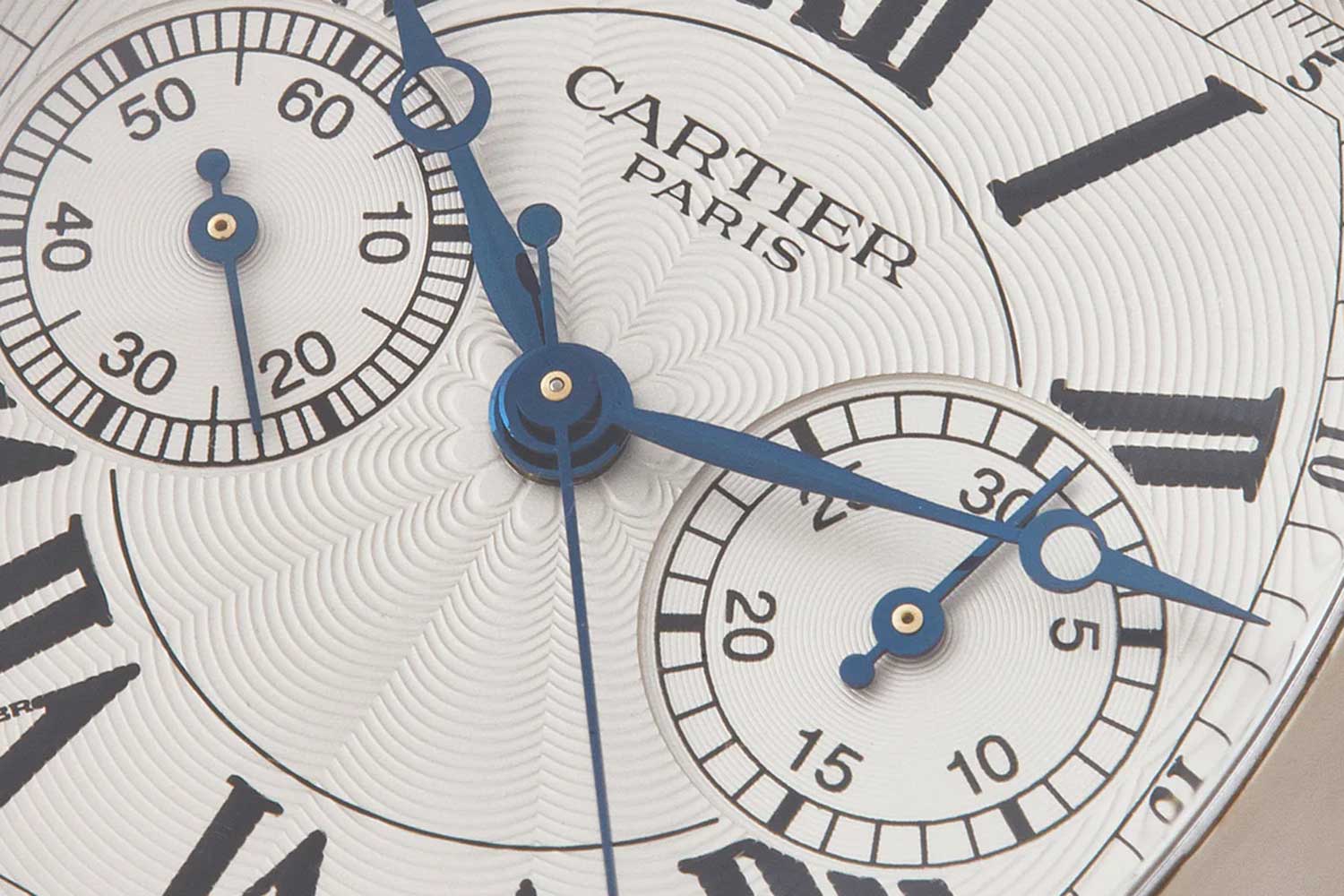
The Ref. 2714 with bold and outsized Roman numerals (Image: A Collected Man)
Intriguingly, both Flageollet and Journe demonstrated a genuine preference for the method of engagement and believed in its place in high-end watchmaking. Both watchmakers subsequently went on to develop chronographs with oscillating pinions under their respective independent brands. Flageollet employed it in various watches including the DB1, DB8 and even in the Maxichrono, although the latter employed all three types of clutches for the three respective hands with the oscillating pinion used to couple the chronograph seconds to the minutes wheel. Journe, on the other hand, incorporated an oscillating pinion in his Chronographe Monopoussoir Rattrapante, which greatly illustrates the extent to which he favoured this coupling system; the only other rattrapante on the market that utlises an oscillating pinion is the Habring split seconds.
As a result of this streamlined setup, the movement could be made smaller, measuring 25.6mm in diameter as compared to traditional horizontally coupled chronographs such as the Valjoux 72 that measures 29.5mm or the Lemania 2310 at 27mm. The case was compact but larger than the original at 34mm by 43mm with a thicker bezel and a sapphire case back. Subsequently, it was also produced in even larger dimensions, measuring 38mm by 43mm, namely the XL ref. 2762. While the original had a fluted crown, the CPCP version features an octagonal crown which, along with its dimensions, gave the watch an assertive presence on the wrist.
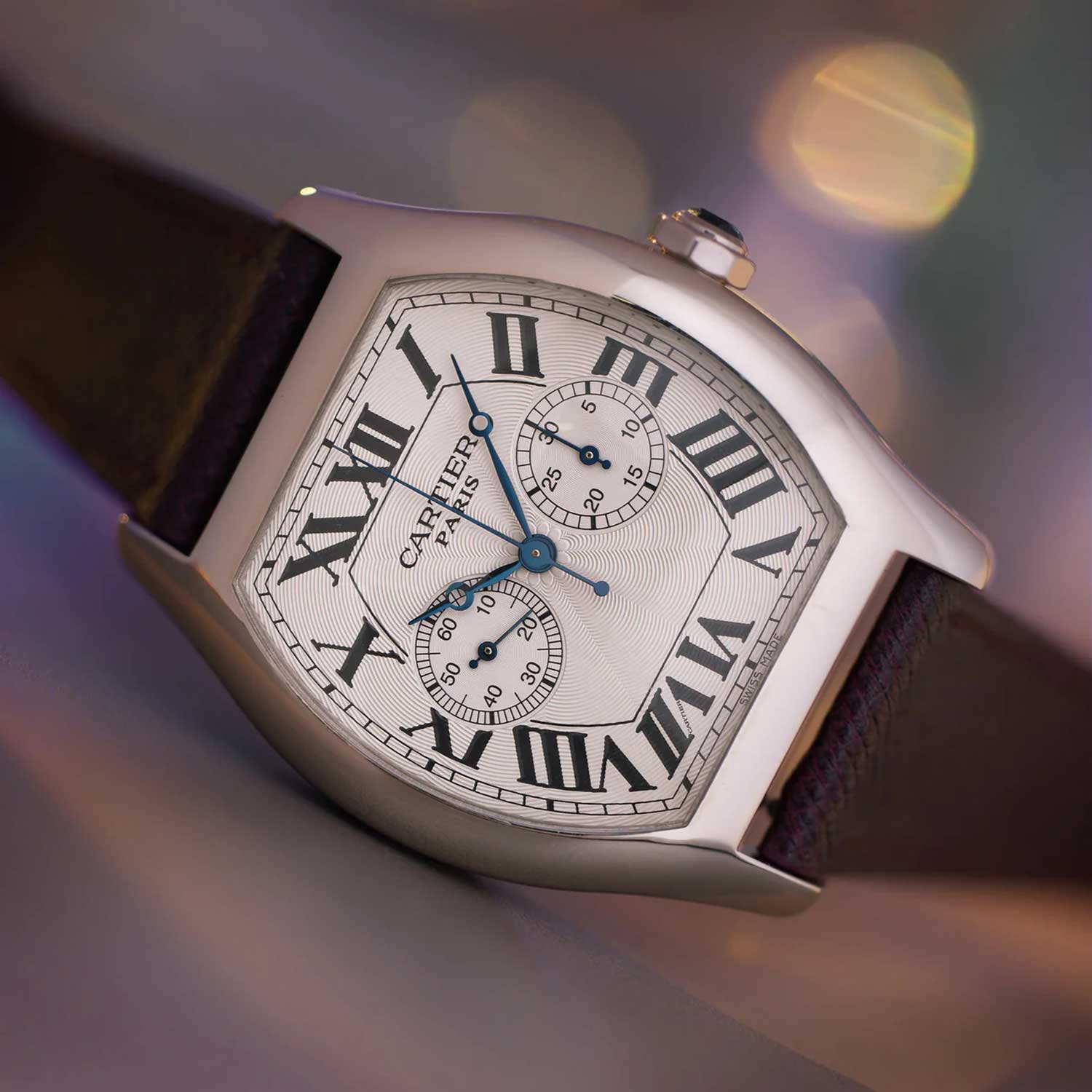
Cartier Tortue Monopusher CPCP, Ref. 2762 (Image: A Collected Man)
While there were various dial executions, approximately four throughout the CPCP run, two early designs remain the most outstanding – the yellow gold ref. 2356 and the white gold ref. 2396. These versions had a circular chapter ring or minute track printed on its tonneau shaped dial like the original, whereas the later versions featured bold outsized numerals that were skewed to play up the case shape.
To date, the CPCP Tortue Monopoussoir has emerged just about 37 times at auction. The most recent examples fetched approximately CHF 43,716 at
Sotheby’s in June of last year and CHF 32,349 at
Phillips in November of the same year. It’ll be interesting to see the forthcoming developments, especially in a time when both Cartier and independent watchmaking have garnered significant momentum within the broader collecting community.














